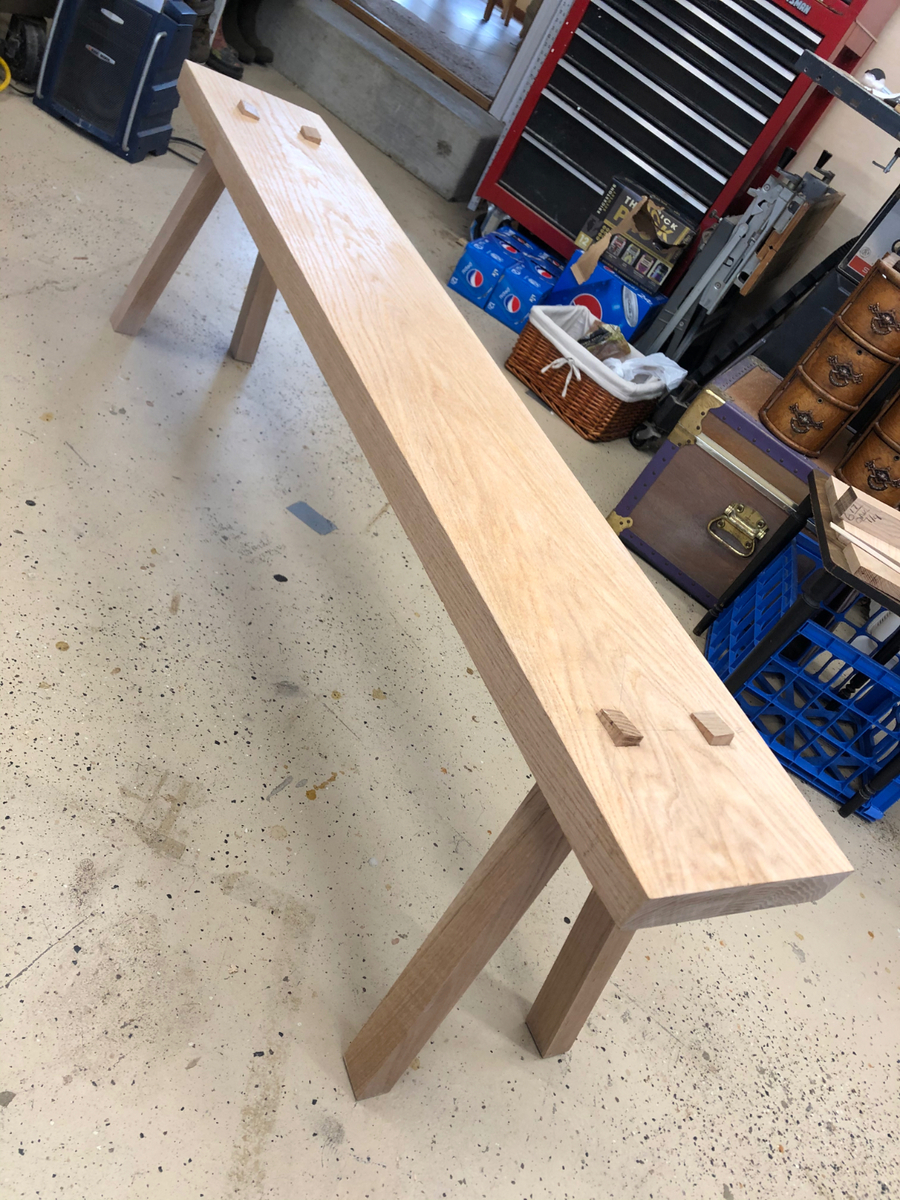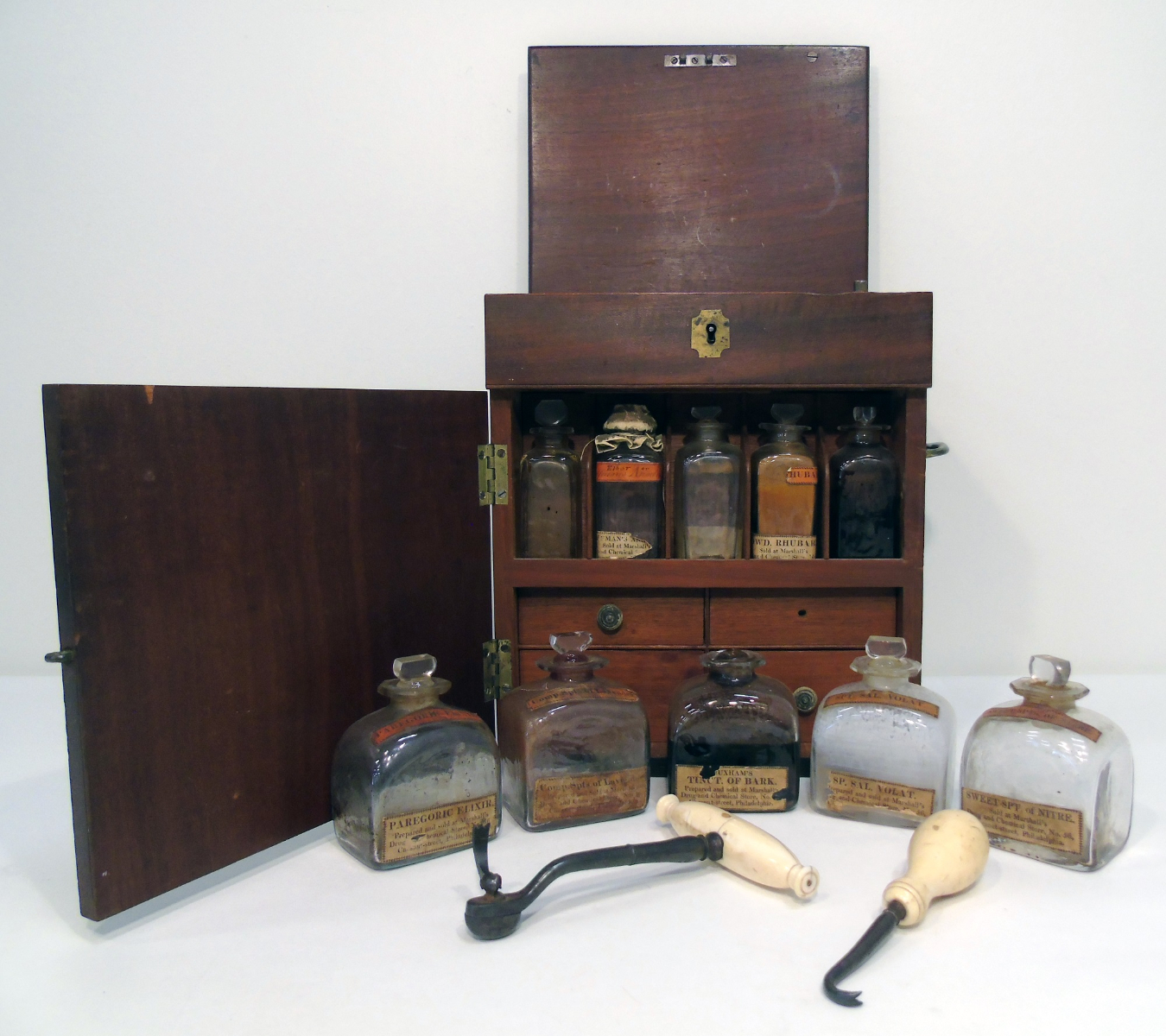-
Posts
1,397 -
Joined
-
Last visited
Content Type
Profiles
Forums
Events
Gallery
Posts posted by Mary Diamond
-
-
Oh, wow… beautiful shots! Thank you for sharing them - it does help to get a better feeling for what to bring with.
-
Had you considered T-nuts and threaded nuts? I use these extensively for table assembles, as well as for a cane. With thicker stock and a heavier threaded rod, these may be something to consider for stool options. Using a Forster bit to create an angled depression on the bottom side of the seat to receive the leg, and rounding the foot end of the legs, can give you an angled leg that will be stable on a wide variety of surfaces.
https://www.rockler.com/steel-threaded-inserts-select-size
https://www.rockler.com/screw-on-tee-nuts-choose-size-thread
I have a scrap at home that will make a nice stool/bench - if I get a chance I will try the Forster bits+threaded inserts with epoxy, and post the results.
-
18 hours ago, madPete said:
Michael, not saying your choice was "all wrong". Oak is just overkill at those prices.
I found this article about hemlock. Seems its used as an alternative to hardwood. Guessing thats the stronger choice over pine...
Either way, avoid the knots as much as possible!
https://www.woodmagazine.com/materials-guide/lumber/wood-species-2/hemlock
I have used hemlock, and personally am very pleased with its durability and ease to work.
-
Happy birthday, Chrispy 😊
-
The legs on my carving bench can be knocked out, as they haven’t had the wedges inserted into the tenons. I would love to see the underside and leg shoulders on your stool, to see the assembly.
-
Wonderful work, madPete!
I might also recommend Ingenious Mechanicks: Early Workbenches & Workholding, by Christopher Schwarz (https://lostartpress.com/collections/books/products/ingenious-mechanicks). I used it to create my oak carving bench, and found it very helpful. Lost Art Press is a treasure for woodworkers, in case you haven’t already come across them - I have a small collection of their books, and a few tools (Crucible) as well. The photo below is before I cut off the rear tenons of my Saalburg Workbench.
-
On 4/2/2023 at 1:39 PM, michaelsbagley said:
I found (red?) Oak staircase hand-rail (bannister) at one of the big box hardware stores (Home Despot? bLowes?) That is sold per foot, and available at lengths up to 10 or 12 feet. It has a flat bottom, and has served perfectly as the ridge pole for our wedge with a 9' ridge for at least 12ish years.
I guess that just leaves the question as to whether the stuff or something similar is still available after all these years.
Intriguing! I like it…
-
😊 I will definitely share if I get to making one.
-
From experience, I can say Pfeil make lovely, high quality steel gouges. I will probably use my existing gouges, but offer some links for consideration below…
https://www.dickblick.com/products/esdee-mastercut-stamp-carving-kit/
https://www.dickblick.com/search/?q=Lino cutter
Flexcut is quite good - what I particularly like about this set is the included sharpening strop and compound Sharpening is important to maintain the cutter sharpness, preventing tear out.
-
Noted. Thank you for the update and all your hard work!
-
Yet another option for the creative Pirate, which can be modified in so many ways (flame LEDs, in particular) - a Mary Rose lantern.
-
Perhaps you already own a lantern, and want to replace the glass for a more authentic portrayal… or perhaps you are making your own Mary Rose lantern… below are some references for pane materials.
https://www.townsends.us/products/cow-horn-pane-for-lantern-or-hornbook
https://www.crazycrow.com/frontier-era-crafts/horn-lantern-pane-3x7inx2mm-in-amber
A wonderful article on conservators recreating horn panes:
Reference from the Worshipful Company of Horners:
https://www.horners.org.uk/the-company/the-horn-collection/
and the Honorable Company of Horners:http://www.hornguild.org/articles-from-the-archives/heating-cow-horn-by-the-horn-swogglers/
More period reference, from The 18th Century Material Culture Resource Center website (https://materialculture18t.wixsite.com/18thcmcrc)https://www.scribd.com/document/254740196/Lighting-Lanterns-Street-Lamps
-
Ah, thank you! Fascinating to know the evolution and requirements that restricted widespread use…
-
Beautiful shot! So, when did rifling become common?
-
Welcome back!
-
8 hours ago, Commodore Swab said:
It's rifled as well
Really?? I was under the impression rifling didn’t occur until later…
-
44 minutes ago, Mission said:
I found several that were about what I'd expect using Google Image search. Medicine chests for land would have typically been smaller than those for sea because there would be much greater opportunity to refill them as well as to procure anything that they might not have in them.
I really like the one in the link below. (I wish I could see the whole thing.) It's no where near big enough for GAoP sea service, but the design looks neat.
https://www.delawarepublic.org/culture-lifestyle-sports/2017-04-23/historic-medicine-chest-sheds-light-on-connection-of-first-state-surgeons-politicians
That chest is interesting, in that the top lid appears square, which does not appear reflected in the apparent depth of the front door section. Perhaps it is 2-sided? Or the top compartment is partially full depth to the drawers (or lower), for tools or taller bottles?
*Edit - addition* Ah, yes, upon review of the article and additional photo, the upper compartment is more visible, and appears to be limited, whereas back hinges are clearly visible, indicating a 2nd door.
-
Ah! I was wondering if it was the screw-off barrel - nice to see it, and I agree, the lines are lovely.
-
On 3/8/2023 at 10:21 AM, Stynky Tudor said:
So what elements are going into our boarder(s)?
Floral themes and scrollwork were popular at the time… if the tile layout is diamond instead of square, that can create a nice lattice effect.
-
-
4 hours ago, Duchess said:
I've worn it to work a few times. The results have been...interesting...😁
😄
-
Lovely!
-
Another project I continually backburner, because… welll, it’s soooo easy, I figure I will always have time to get to it. Because, you know, we all have loads of time before an event. 😉
-
Lovely work! That is in my “Materials Acquired” project status… where projects can wait for years…






Tavern stools - portable for events
in Shipwright
Posted
Love it! The leg assembly is very like what I was thinking. I particularly like the rough hewn surface and wedge shape.
On the t-nut assemblies I have made before, I make the bolt receiving hole (in the base material), as deep as possible, to add additional rigidity to the assembly.